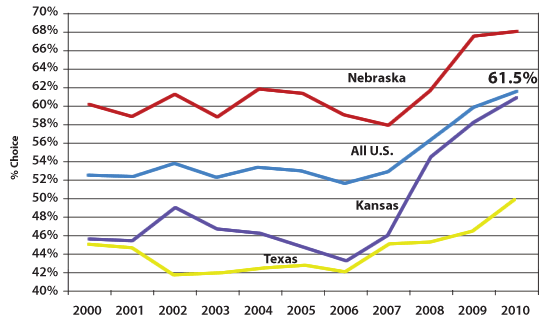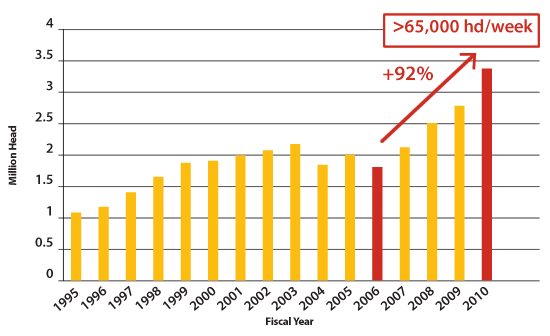CAB Mythbusters
What they thought they knew that just ain't true.
You've heard this before: If it seems too good to be true, it probably isn't so. Like in the case of low-fat ice cream that claims the same taste as the original. Don't buy it, folks. Get the real deal — trust me! But sometimes the stars line up and you get a too-good-to-be-true moment that is actually genuine. Like the rise in Certified Angus Beef® (CAB®) acceptance rates.
One of my teammates heard this on the road last year:
Myth: Since CAB has had such a dramatic rise in acceptance rate, you must have lowered your standards.
Fact: CAB is a quality-based program that simply benefited from a nationwide upswing in cattle grading into late 2011. Two years ago, our own Larry Corah and Mark McCully authored a white paper that looked at various explanations for that spike, including good feeding conditions, changes in compositional end point, more heifers in the harvest mix and, perhaps most encouraging, changes in genetics.
Recently the trend has abated somewhat, but Fig.1 shows what USDA Quality Grade trends looked like as we went into last year:
| Table 1: Trends in quality grading | ||||
 |
||||
| Source: USDA. | ||||
And here is a chart of CAB's growth:
| Table 2: Carcasses certified for the CAB® brand | ||||
 |
||||
| Source: Certified Angus Beef LLC. | ||||
To get real specific about CAB's quality-based specifications (the rite of passage for entry into the brand), they've never really changed. We've tightened them a time or two to better screen out dairy or Bos indicus genetics. And in 2006 we did adjust by decoupling what was a yield grade (YG) limit to consider the components of yield grade separately. That delivers more consistency in the box. So the "YG 3.9 or better" specification became "less than 1 inch backfat, a 10- to 16-square-inch ribeye and less than 1,000 pound hot carcass weight." That increase in uniformity was welcomed by our end users, and doubtless led to greater demand for product.
It's true that the change pulled in product that wouldn't have made CAB under the straight yield grade spec, but it also excludes other product that would have previously been accepted.
Simplistically, some might think in the last five years we loaded up on YG 4 carcasses for the brand. Evidence continues to suggest otherwise. In fact, when we looked at numbers from our Feedlot Licensing Program, they showed YG 4s declined from 2009 to 2010 (from 14.3% to 9.8%). At the same time CAB acceptance rate on conventional cattle fed through partner yards increased by almost 3 percentage points.
The supply development team likes to joke that the increase in acceptance rates is because we're so darn good at our jobs (you know, increasing supply), but really we know it's because the cattle producers are so good at their jobs. They've implemented genetic and management programs aimed at hitting quality targets, and they're getting more precise all the time.
To get a regular dose of this kind of writing, visit the Black Ink Blog at www.blackinkwithcab.com.













